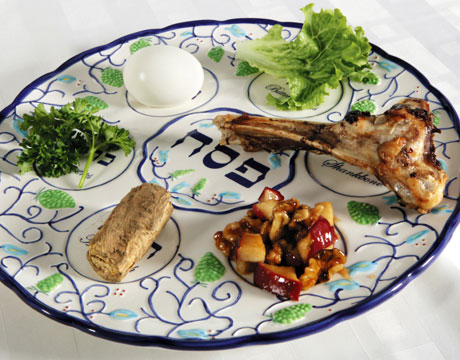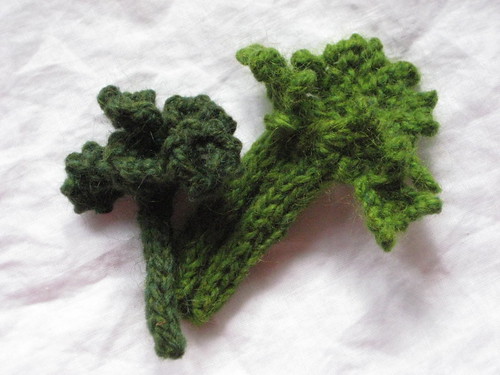 escape from their servitude in Egypt. Moses called for God’s help and he sent ten plagues upon the Egyptians, the last seven were supposed to not affect the slaves at all. They were turning water to blood, frogs, lice, disease that affected livestock, boils, hail, locusts, and the ninth was darkness. When God sent the tenth and final plague on the Egyptians, the death of the firstborn child, all of the Jewish families slaughtered a lamb and spread the blood on their door, thus the Angel of Death would Passover those homes. Passover is also known as the Pesach.
escape from their servitude in Egypt. Moses called for God’s help and he sent ten plagues upon the Egyptians, the last seven were supposed to not affect the slaves at all. They were turning water to blood, frogs, lice, disease that affected livestock, boils, hail, locusts, and the ninth was darkness. When God sent the tenth and final plague on the Egyptians, the death of the firstborn child, all of the Jewish families slaughtered a lamb and spread the blood on their door, thus the Angel of Death would Passover those homes. Passover is also known as the Pesach. Matzah- when the Jews fled from Egypt, they did not have time to allow their bread to leaven, leaving them with the flat bread known as Matzah. This includes “anything made from the five major grains (wheat, rye, barley, oats and spelt) that has not been completely cooked within 18 minutes after coming into contact with water.” Because of this, no leavened bread is eaten during the duration of Passover, which lasts seven or eight days. The extra day is added in preparation of many things. In case of discrepancies in the interpretation of the Jewish calendar, local calendars compared to the temple at Jerusalem and to allow travelers time to arrive, and in areas of danger, to prevent knowledge on the better day for enemies to attack.
Matzah- when the Jews fled from Egypt, they did not have time to allow their bread to leaven, leaving them with the flat bread known as Matzah. This includes “anything made from the five major grains (wheat, rye, barley, oats and spelt) that has not been completely cooked within 18 minutes after coming into contact with water.” Because of this, no leavened bread is eaten during the duration of Passover, which lasts seven or eight days. The extra day is added in preparation of many things. In case of discrepancies in the interpretation of the Jewish calendar, local calendars compared to the temple at Jerusalem and to allow travelers time to arrive, and in areas of danger, to prevent knowledge on the better day for enemies to attack. Minor Fast- the first born must partake in a minor fast the day before Passover, which consists from dawn to nightfall in honor of being one of the firstborn spared during the tenth plague. If the firstborn son has not reached his Bar Mitzvah, the Jewish coming of age ceremony, his father observes the fast for him.

Elijah- was a prophet and maricle worker in Israel. Elijah raised the dead, brought fire down from the sky, and ascended into heaven in a chariot.There is always an empty chair left at the table for him during the Passover Seder. He also has his own wine glass and at some part during the meal, the door is open and he is invited to join the Seder.
 Candles- in the Jewish tradition, the day begins and ends at sunset. The lighting of the candles symbolizes the change into a new day. They are lighted before the Seder begins and a blessing is recited.
Candles- in the Jewish tradition, the day begins and ends at sunset. The lighting of the candles symbolizes the change into a new day. They are lighted before the Seder begins and a blessing is recited. The Zeroa- this is a roasted shank bone that represents the lamb sacrificed on the temple of Jerusalem as a offering to God.
The Morar- a bitter herb that is a remembrance of the bitterness of slavery. It is dipped in saltwater before being consumed.
 Charoset- a combination of dates, apples, nuts, cinnamon, and wine that symbolizes the mortar the slaves of Egypt used in their labors.
Charoset- a combination of dates, apples, nuts, cinnamon, and wine that symbolizes the mortar the slaves of Egypt used in their labors.Karpas- a green vegetable that is another sign of the coming of spring and hope.
 Saltwater- this represents the tears shed during the slaves' time in Egypt. The bitter herbs are dipped in the saltwater before being eaten.
Saltwater- this represents the tears shed during the slaves' time in Egypt. The bitter herbs are dipped in the saltwater before being eaten.Wine-Wine symbolizes the "joy of life." This is drunk four times during the Seder to represent the four promises God made to the Israelites in their freedom from slavery.
the Seder to represent the four promises God made to the Israelites in their freedom from slavery.
 the Seder to represent the four promises God made to the Israelites in their freedom from slavery.
the Seder to represent the four promises God made to the Israelites in their freedom from slavery. 1. "I will free you."
2. "I will deliver you."
3. "I will redeem you."
4. "I will take you to be my people."
"I am the Lord, and I will bring you out from under the burdens of the Egyptians, and I will deliver you from their bondage, and I will redeem you with an out-stretched arm and with great acts of judgment, and I will take you for my people, and I will be your God; and you shall know that I am the Lord your God, who has brought you out from under the burdens of the Egyptians. And I will bring you into the land which I swore to give to Abraham, to Isaac, and to Jacob; I will give it to you for a possession. I am the Lord" (Exodus 6:6-8).
 Hand Washing- the hands are washed in preparation for the Seder, as a way of getting ready.
Hand Washing- the hands are washed in preparation for the Seder, as a way of getting ready.Breaking the Middle Matzah- The leader at the Seder
 breaks the middle piece of Matzah in half, the larger of the two pieces is set aside as the Afikkoman, which will be explained below. The smaller piece is returned to the table.
breaks the middle piece of Matzah in half, the larger of the two pieces is set aside as the Afikkoman, which will be explained below. The smaller piece is returned to the table.Questions- these are traditionally asked by the youngest child present. This symbolizes the need to share the traditions of the Seder with children and many parts of the Seder are directed towards the education of children.
-"Why is this night different from all other nights?"
-"On all other nights, we eat either unleavened or leavened bread, but tonight we eat only -unleavened bread?"
-"On all other nights, we eat all kinds of vegetables, but tonight, we eat only bitter herbs?"
-"On all other nights, we do not dip [our food] even once, but tonight we dip twice?"
-"On all other nights, we eat either sitting or reclining, but tonight we only recline?"
-"On all other nights, we eat either unleavened or leavened bread, but tonight we eat only -unleavened bread?"
-"On all other nights, we eat all kinds of vegetables, but tonight, we eat only bitter herbs?"
-"On all other nights, we do not dip [our food] even once, but tonight we dip twice?"
-"On all other nights, we eat either sitting or reclining, but tonight we only recline?"
Telling the story- The story of passover is told during this section of the Seder, as a reminder of what God did for their ancestors in Egypt.
The four sons- This section also relates to the importance of the education of the children in relation to the Passover tradition. Four sons, one wise, one wicked, one simple, and one who does not know to ask. They are all given answers to their questions in ways that will benefit them individually.
-The wise son inquires "What is the meaning of the statutes and laws that God has commanded you to do?" He is answered with "You should reply to him the laws of pesach: one may not eat any dessert after the paschal sacrifice."
-The wicked son asks, "What is this service to you?" He is rebuked by the explanation that "It is because God acted for my sake when I left Egypt."
-The simple son, asks, "What is this?" and he is answered with "With a strong hand the Almighty led us out from Egypt, from the house of bondage."
-The son who does not know to ask is told, "It is because of what the Almighty did for me when I left Egypt."
 Afikkoman- This is the larger of the two pieces of Matzah broken earlier in the Seder. The piece is traditionally either hid by the parents for the children to find, and when they do, they are usually rewarded with some prize which varies. The children can also hide the Afikkoman for the adults to find. Sometimes it can be stolen during the meal by the children, who then demand a reward for it's return. This tradition is also aimed at keeping the children invested and excited about the Seder.
Afikkoman- This is the larger of the two pieces of Matzah broken earlier in the Seder. The piece is traditionally either hid by the parents for the children to find, and when they do, they are usually rewarded with some prize which varies. The children can also hide the Afikkoman for the adults to find. Sometimes it can be stolen during the meal by the children, who then demand a reward for it's return. This tradition is also aimed at keeping the children invested and excited about the Seder. This is not an entirely comprehensive list of the Passover Seder, there are many repetitions of  certain actions, such as hand washing that occurs during the Seder. There are
certain actions, such as hand washing that occurs during the Seder. There are also many other subtleties that can be followed in the Haggadah. There are songs, blessings, and other traditions that happen during the meal, as well as special foods that are traditionally eaten, such as gefilte fish (left) and matzo ball soup (right).
also many other subtleties that can be followed in the Haggadah. There are songs, blessings, and other traditions that happen during the meal, as well as special foods that are traditionally eaten, such as gefilte fish (left) and matzo ball soup (right).
 certain actions, such as hand washing that occurs during the Seder. There are
certain actions, such as hand washing that occurs during the Seder. There are also many other subtleties that can be followed in the Haggadah. There are songs, blessings, and other traditions that happen during the meal, as well as special foods that are traditionally eaten, such as gefilte fish (left) and matzo ball soup (right).
also many other subtleties that can be followed in the Haggadah. There are songs, blessings, and other traditions that happen during the meal, as well as special foods that are traditionally eaten, such as gefilte fish (left) and matzo ball soup (right). 




No comments:
Post a Comment